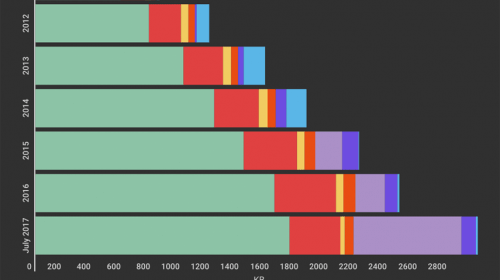New standards in technology appear on an almost daily basis and every once in a while one of these standards has a profound effect on the industry; DVB-S2/ACM is one of them.
Industrial revolution
The latest standard for DVB (Digital Video Broadcasting) is called DVB-S2 is and this is one of the most complex and far-reaching technologies ever implemented by the VSAT industry. DVB-S2 has one very important new element called Adaptive Coding and Modulation (ACM), hence DVB-S2/ACM.
For VSAT services, ACM alters the modulation and coding to optimize the QoS and throughput, adapting to varying link conditions and this is done automatically and in real time. Many organizations are asking their satellite services supplier to switch over to this new standard to increase the capacity from their existing links. BusinessCom is already using DVB-S2 as this technology provides a significant number of improvements over the previous DVB-S standard. With ACM properly implemented the satellite network can expect a drastically increased forward link capacity of more than 50% (in some installs) over a DVB-S2 link without ACM.
Benefits:
- Bandwidth savings
- Increased data throughput
- Greater profit margins
- Flexibility
- Rain fade optimization
- Enhanced carriage of IP traffic
- Improved forward error correction
However, a complete system approach is required for this technology to deploy the maximum capability and effectiveness of Adaptive Coding and Modulation within the DVB-S2 system. The combination of ACM plus DVB-S2 creates increased bandwidth utilization with flexibility and simplicity that network operators will find invaluable.





